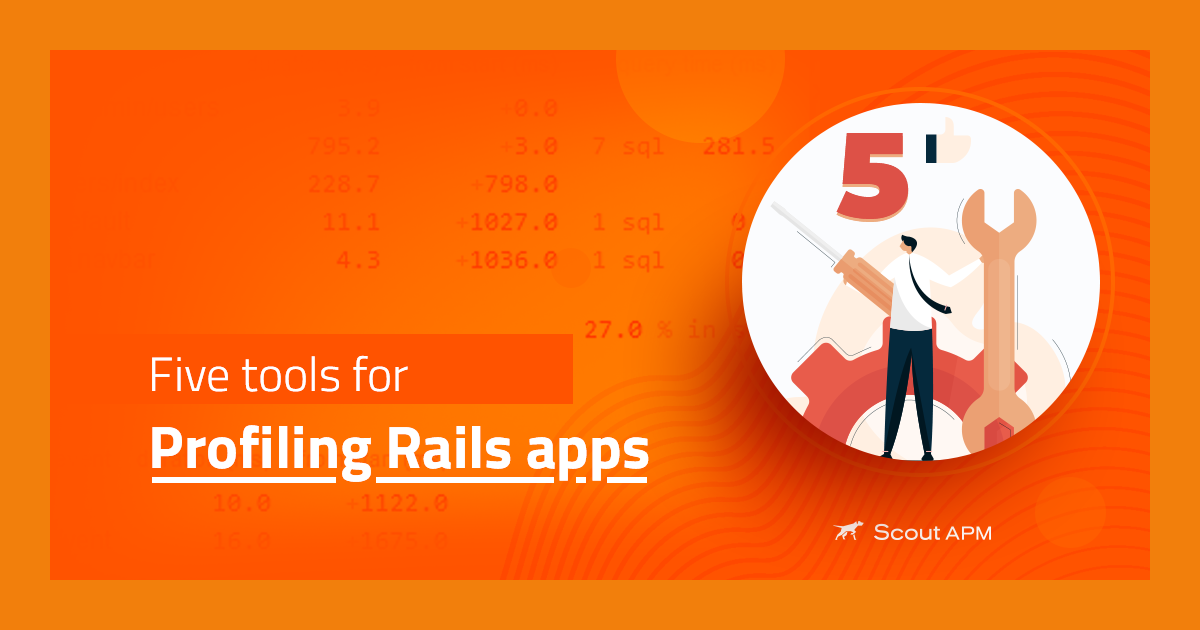Overcoming the Cold Start Challenge with Gunicorn Workers in Python in Django Applications

Cold starts are the unspoken reason why your applications are slow. But what is a cold start?
A "cold start" describes the delay experienced when a web server boots up after being inactive or turned off. This results in slower response times for the initial request because the server needs to load essential resources. "Latency" in this context means the time it takes for a user to get a response from a server that's undergoing a cold start.
Cold starts can occur when a server hasn't had traffic for a while or if it's restarted for maintenance. During this state, the server lacks pre-loaded or cached data. So, only upon receiving the first request does it start initializing the required resources.
Cold Starts and App Performance
Performance metrics in computer science are typically based on time and space complexity. Time complexity deals with the application's execution time, while space complexity pertains to the memory it consumes during execution.
For Django, performance relates to the speed at which a server processes user requests and returns results. The quicker the response, the better the user experience. If a Django application exhausts the server's memory, it can become unresponsive, or in severe cases, crash due to inadequate processing memory.
Cold starts negatively impact application performance, causing slower server responses. Developer teams ought to use tools like application monitoring tools to track issues regarding memory bloat and pre-optimal start times.
App latency’s effect on user experience
Users anticipate swift app loads without delays. App latency not only affects the direct user experience but can also influence broader aspects of user interaction and business metrics. Here’s a breakdown of the issues associated with latency:
-
User Satisfaction: When an application takes longer to load, users' patience wears thin. Prolonged load times can result in users feeling frustrated, pushing them to opt for alternatives or abandon your app altogether.
-
Financial Impact: An app's responsiveness directly correlates with its business success metrics. Sluggishness can lead to reduced user retention, hindered conversion rates, and subsequently, a decline in revenue.
-
Engagement Rates: Latency can be a significant barrier to maintaining consistent user interaction. Slow-loading apps can deter users from engaging, diminishing overall activity levels.
Gunicorn Optimization to the Rescue
Your Gunicorn setup should be the first place you look when you want to overcome cold start challenges.
Before we get into detail about Gunicorn optimizations, let’s define what Gunicorn is. Gunicorn is a Web Server Gateway Interface(WSGI) HTTP server for Unix that acts as the interface between a web application and the web server. It’s primarily designed to be able to handle multiple web requests concurrently and automatically distributes them among the worker processes. In this case, Nginx handles all the incoming web requests and then passes them to Gunicorn which distributes the load among the workers and sends the response back to Nginx.
Worker-related Optimizations
The Gunicorn handles incoming requests through worker processes. These workers play a crucial role in defining how well the application can handle incoming traffic, particularly at startup. Below are some ways basic concepts to keep in mind when optimizing Gunicorn workers:
-
Number of Workers: The number of workers directly impacts the level of concurrency your application can handle. The recommended configuration is to set the number of workers to (2 * number of CPU cores) + 1. This ensures that the application can efficiently handle multiple simultaneous requests. Configuration example: --workers=9
-
Worker Class: Gunicorn supports various worker types. For applications that are I/O bound or deal with a lot of simultaneous connections, using an asynchronous worker like Gevent can be beneficial. With Gevent, applications can handle many concurrent requests without needing a worker for each. Configure with: --worker-class=gevent
-
Worker Timeout: Sometimes, a worker might hang or take too long to respond to a request. The --timeout option specifies the maximum time (in seconds) a worker can take to respond before being restarted. This ensures that hung processes are killed and replaced, maintaining responsiveness: --timeout=30
-
Max Requests per Worker: Over time, applications might experience memory leaks. Restarting workers periodically is a strategy to mitigate this. By setting a maximum number of requests a worker can handle before being restarted, we can keep memory usage in check. Configuration example: --max-requests=500
-
Monitor Memory Usage: Continuously keep an eye on how much memory each worker is consuming. If a worker starts consuming excessive memory, consider restarting it or allocating more resources
Memory and Preloading
When discussing application performance, especially in the context of cold starts, memory management and boot times are important. Efficient memory usage ensures that an application can process requests smoothly without running into resource limitations. Rapid boot times mean that the time from initiating the server to it being ready to serve requests is minimized. Both these factors are interconnected in many ways:
-
Utilize the Preload Option: By using --preload, Gunicorn loads the application code before forking worker processes. This not only speeds up the boot time but also ensures efficient memory usage as the application code is loaded only once. Without preloading, each worker might load slightly different instances of the application's modules into memory. With preloading, workers share the memory space of the master process for the application's code, leading to potential memory savings, especially if your application relies on large libraries or modules.
-
Sufficient Memory: Monitor the application's memory usage and ensure that the server always has an ample memory reserve. Cold starts can be particularly memory-intensive because multiple processes or components might initialize simultaneously. Therefore, ensuring that the server has ample memory, especially during these cold start phases, is crucial.
Scaling and Distribution
As user numbers surge and the volume of requests escalates, the application's foundational infrastructure can experience strains, leading to performance bottlenecks. The nature of cold starts means they can exacerbate such strains, especially during peak traffic times.
For applications running multiple Gunicorn instances, employing a Load Balancer helps distribute incoming traffic among the instances. This distribution ensures no single instance is overwhelmed, leading to better overall performance.
In conclusion, your Gunicorn setup greatly has an effect on dealing with cold starts head on. Next we are going to explore specifically how to configure your Django application with cold starts in mind.
Mitigating Cold Starts in Django
A well-tuned Gunicorn is only part of the equation in ensuring smooth application performance. Django, as the web framework in this context, has its own nuances and optimization avenues that, when addressed, can substantially reduce cold start times. Here’s a deep dive into some strategies to ensure Django performs at its peak:
-
Optimize Django Initialization:
-
Laziness in Django: Django’s “lazy” features help delay the loading or processing of components until they’re explicitly needed. This principle can be applied in several areas of the application, from model field definitions to query evaluations. For instance, querysets in Django are lazy by nature; they don't hit the database until they are evaluated. This means you can define your query logic during initialization without incurring database costs until the actual data is needed.
-
Database Optimization: Database queries are often the primary culprits behind slow startups. By utilizing Django’s select_related() and prefetch_related(), you can optimize how Django fetches related models. These methods help in reducing the number of database hits by joining and pre-fetching related data in a more efficient manner. Additionally, tools like Django Debug Toolbar can assist in identifying slow or redundant queries.
-
-
Asynchronous Processing: Asynchronous Views in Django: Starting from Django 3.1, asynchronous views became a feature. When running your application using an ASGI server, you can write views that handle requests asynchronously. This can be particularly beneficial for I/O bound operations, where the system is waiting for data, allowing the server to handle other incoming requests in the meantime.
-
Effective Caching:
The power of caching in Django can't be overstated. The idea is to store computed or fetched data in a faster-accessing medium, reducing the time taken to retrieve it in subsequent requests. With Django’s versatile caching framework, you can:-
Cache Parts of a Page: Using template fragment caching, only the compute-intensive or frequently accessed parts of a page are cached.
-
Cache Entire Pages: For largely static pages, Django's per-site cache or per-view cache can be deployed.
-
Cache Database Results: Often, similar queries are made repeatedly. By caching the results, the system avoids hitting the database every time.
-
-
Monitoring and Profiling:
You can't optimize what you can't measure. Regularly profiling your application, especially during cold starts, can reveal bottlenecks and areas of inefficiency. Tools like cProfile give insights into the function calls and their costs, while more extensive Application Performance Monitoring (APM) tools, such as Scout APM to provide a more holistic view of application behavior, identifying slow database queries, memory bloats, or other performance issues.
There are many ways you can customize Django in a way that will help you deal with cold starts. This is only the beginning.
Conclusion
Properly scaling Gunicorn workers and writing performant queries are the key ways to overcome the cold start challenge in Django Applications. Every developer should prioritize offering a fast and responsive application to their end users.





